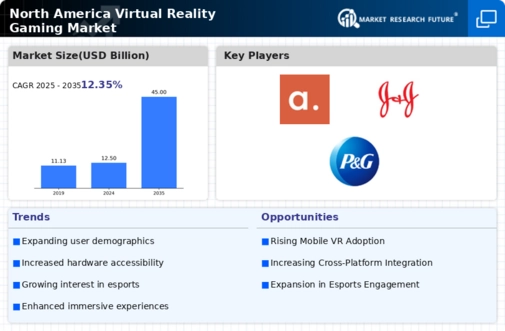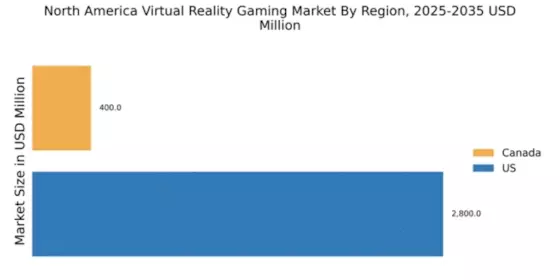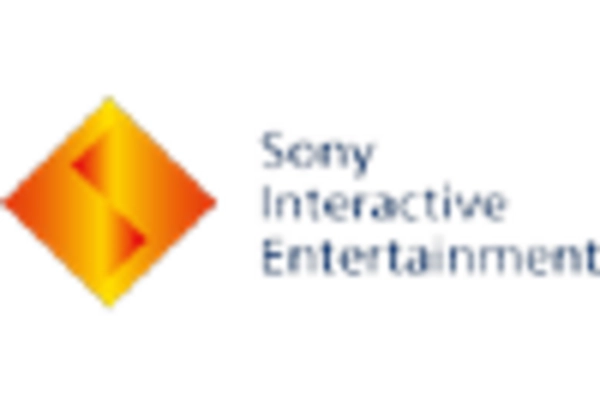Rise of Social Interaction in Gaming
The virtual reality-gaming market is increasingly influenced by the rise of social interaction within gaming environments. Gamers are seeking more engaging experiences that allow them to connect with others in virtual spaces. This trend is evident in the growing popularity of multiplayer VR games, which facilitate social interactions and community building. As of 2025, it is estimated that over 60% of VR gamers in North America participate in multiplayer experiences, indicating a shift towards collaborative gameplay. This social aspect not only enhances user engagement but also drives sales in the virtual reality-gaming market, as developers focus on creating more interactive and community-oriented games.
Expansion of VR Platforms and Ecosystems
The virtual reality-gaming market is benefiting from the expansion of VR platforms and ecosystems, which facilitate easier access to a wide range of games and experiences. Major companies are developing comprehensive VR ecosystems that include hardware, software, and online services. This integration allows users to seamlessly access various VR content, enhancing the overall gaming experience. As of 2025, it is projected that the number of VR platforms in North America will double, providing gamers with more choices and fostering competition among developers. This expansion is likely to drive innovation and growth within the virtual reality-gaming market.
Technological Advancements in VR Hardware
The virtual reality-gaming market is experiencing rapid technological advancements in hardware, which significantly enhances user experience. Innovations such as improved graphics processing units (GPUs) and lightweight headsets are making VR more immersive and accessible. For instance, the introduction of 4K resolution displays and advanced motion tracking systems has led to a more realistic gaming environment. As of 2025, the market for VR headsets in North America is projected to reach approximately $5 billion, reflecting a compound annual growth rate (CAGR) of around 30% over the next five years. This growth is driven by consumer demand for high-quality gaming experiences, which is likely to propel the virtual reality-gaming market further.
Increased Investment in VR Content Development
The virtual reality-gaming market is witnessing increased investment in content development, which is crucial for sustaining growth. Major gaming studios and independent developers are allocating substantial resources to create immersive VR experiences. In 2025, it is projected that investment in VR game development in North America will exceed $1 billion, reflecting a growing recognition of VR's potential. This influx of capital is likely to result in a diverse range of titles, catering to various gaming preferences and demographics. As a result, the virtual reality-gaming market is expected to expand, attracting both casual and hardcore gamers alike.
Growing Popularity of VR in Education and Training
The virtual reality-gaming market is also being influenced by the growing popularity of VR applications in education and training. Educational institutions and corporate training programs are increasingly adopting VR technology to create immersive learning experiences. This trend not only enhances the educational value of VR but also introduces new audiences to gaming. As of 2025, it is estimated that the educational VR market in North America will reach $2 billion, with a significant portion of this growth attributed to gamified learning experiences. This crossover between education and gaming is likely to bolster the virtual reality-gaming market by expanding its user base.

















Leave a Comment